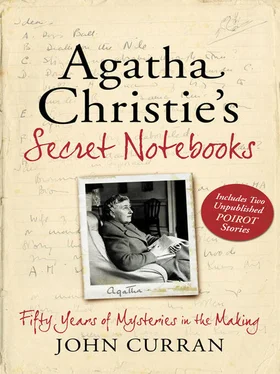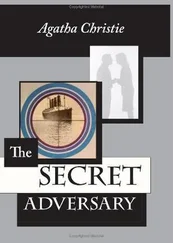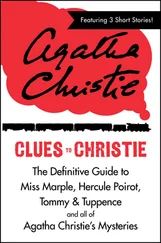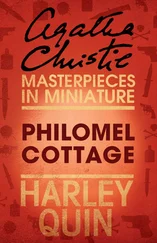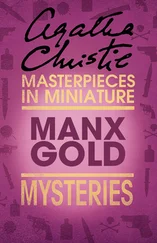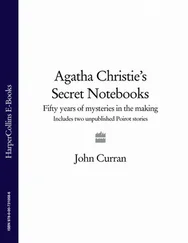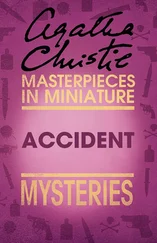The salient elements of the plot are succinctly captured in a half-dozen pages of Notebook 13:
John at consulting desk—gear changing—annoyance with G.—E. and her wonderful knack with cars
E. in studio
Edward—his nervousness—sly, clever creature
Points
Gerda in straightforward fashion because discovers liaison of John
Lady A—sheer vagueness
Edward—in love with Eliz.
Eliz. [Henrietta]—very cleverly tries to shield G
Bit of clay pointing to herself
Ends by Gerda trying to kill Eliz.
More practical details are teased out in Notebook 31:
Now strict mechanics
G. takes revolvers—shoots John—puts revolver in knitting bag—or puts revolver in fox cape and purse down below settee. Henrietta finds it—puts it back in collection
Inspector comes to Sir Henry—asks about revolver. Is another missing?
Sir H. stalls—finally says it is
Was it in a holster?
Yes
Holster found in road near V’s cottage—in bush?
Gerda takes out 2 revolvers—shoots him with one puts holster in V’s fur then shoots him—drops it in knitting bag and other by John’s body or follows John to cottage—drops holster—comes back after him to pool—shoots him—back at home hides revolver?
Recovers it at inquest? Gudgeon takes revolver from eggs—puts it in study
Henrietta does indeed try to shield Gerda, although she doesn’t resort to the piece-of-clay gambit. Nor is there an attempt to incriminate Veronica Cray by placing the gun in her fur cape, although in the stage adaptation the gun is found in Veronica’s handbag. With her customary fertility of invention, Christie sketches a few possible scenarios for the disposal of the incriminating gun and holster, elements from each of which—the two revolvers, Sir Henry’s missing revolver, Gudgeon and the eggs—she subsumed into the novel.
Christie introduces, in Notebook 32, an already reordered alphabetical sequence (but without, for some reason, any F, G or I) although it is not followed exactly in the novel. Note that here she is referring to the story as ‘Echo’, reflecting the last line of the Tennyson quotation:
End of Echo
H.P. on seat around pool—Inspector’s men crashing about—Grant comes to him—making a monkey of him
A. Must find pistol fired just before—Mrs. C no time to hide it—must have hidden it near [Chapter 26]
B. All of them with motive—Lady A and David—Edmund and Henrietta. P. says solution—away not towards— from not to. G[rant] says sometimes I think they all know—P says They do know. [Chapter 26]
C. Lady A—about truth—would be satisfied [Chapter 27] H. Midge breaks off engagement [Chapter 27]
D. P. at home—Inspector—they find pistol [Chapter 26]
E. Midge and Edward and gas [Chapter 28]
J. P and Henrietta find leather holster [Chapter 29]
Taken at the Flood
12 November 1948
There is a tide in the affairs of men, Which, taken at the flood, leads on to fortune…
Shakespeare, Julius Caesar
Gordon Cloade is killed in an air raid and his new young wife, Rosaleen, inherits a fortune. When a mysterious death brings Hercule Poirot to Warmsley Vale he realises that the Cloade family, badly in need of money, has good reason to kill her. So why was it not Rosaleen who died?
Taken at the Flood was another novel (like Four-Fifty from Paddington and Ordeal by Innocence) whose title gave trouble. The original suggestions were The Incoming Tide or There is a Tide, until it was discovered that the new Taylor Caldwell novel was called There is a Time. This probably explains why not once, in the course of 30 pages of notes, scattered across 13 Notebooks, is the title Taken at the Flood (or its eventual US equivalent There is a Tide) mentioned. In the body of the novel the quotation appears in Book II, Chapter 16. In fact, the genesis of the title and, indeed, the book itself, is far more complicated. In a letter dated September 1947 Christie’s agent refers to a ‘revised’ version of Taken at the Flood and the ‘marvellous job in altering it’. This tantalising reference must remain a mystery, as there is nothing in either the Notebooks or the surviving correspondence to clarify it.
The plot of Taken at the Flood is one of Christie’s most intricate. To begin with, none of the deaths are as they initially seem. The first death, presumed a murder, is an accident; the second, presumed a suicide, is in fact a suicide (although seasoned Christie readers will suspect murder); and the third, presumed suicide, is a murder. This combination of explanations is unique in the Christie output.
What’s more, both Frances and Rowley Cloade, independently of each other, complicate the real killer’s plan with sub-plots of their own, each of which ends with the violent death of their co-conspirators. Then there is confusion about the identity of the first corpse. Is he Enoch Arden? Is Robert Underhay still alive? Is he the man found dead in the Blue Boar? And if he isn’t, who is that corpse? This plot device is shared, brilliantly, in One, Two Buckle my Shoe, and much less successfully in Four-Fifty from Paddington.
Some of this complexity is mirrored in the notes, due mainly to the fact that they are intertwined for much of the time with those for They Do It with Mirrors and Sleeping Murder. In the notes, the working title for Taken at the Flood hovered between ‘Cover Her Face’, the one-time title for Sleeping Murder, and ‘Mirrors’, shorthand for They Do It with Mirrors. Each is used three times but in all cases with the character names and plot of Taken at the Flood. It is worth remembering that none of the three titles is very specific; all could, with minimal tweaking, apply to any Christie title, whereas titles such as Murder on the Orient Express or Lord Edgware Dies are precise and could not be considered interchangeable.
In the opening pages of Notebooks 19 and 30 we find the genesis of the Cloade family situation:
Cover her Face
Characters
The Cloades
Nathaniel—solicitor—embezzling money [Jeremy]
Frances—His wife daughter of- Lord Edward Hatherly father Lady Angarethick—says her family are all crooks
Jeremy—ex-pilot—lawless—daring [probably the origin of
David Hunter]
Jane Brown—Girl of character engaged to Jeremy? [Lynn]
Susan Cloade—(or a widow?) Cool—discerning [Adela or Katherine]
Rosaleen Hunter
Nathaniel Clode
Frances Clode—(aristocratic wife)
Susan Ridgeway
A Cloade—war widow—breeds dogs
As usual, however, names were to change. The example above, from Notebook 30, is the only use of the name ‘Rosaleen’ anywhere in the notes and it is used with her Hunter, rather than Cloade, surname. Throughout the Notebooks she is referred to as Lena, itself a diminution of Rosaleen. The ‘Cloade war widow’ who breeds dogs may have been inspired by Christie’s own daughter Rosalind, a devoted dog lover and breeder, whose first husband, Hubert Prichard, perished in the war.
Notebook 13 illustrates Christie’s frequently adopted alphabetical system:
A. Mrs. Marchmont asks Lena for money—(gets it?) [Book I Chapter 5]
B. Frances asks—David interrupts—her reaction—for the moment he feels afraid
David and Lena look out of window—sees Lynn. Lena sees too?
He goes off- interview with Lynn—then him and Lena again [Book I Chapter 6]
C. Hercule Poirot—Aunt Kathie—spirit guidance [Prologue]
D. The farm—Lena and Rowley—he looks at it just as he looks at her—(planning its death?) she goes away—stranger comes—asks way to (?) Furrowtown—goes passed it—face is familiar to Rowley [Book I Chapter 8]
Читать дальше
Конец ознакомительного отрывка
Купить книгу
